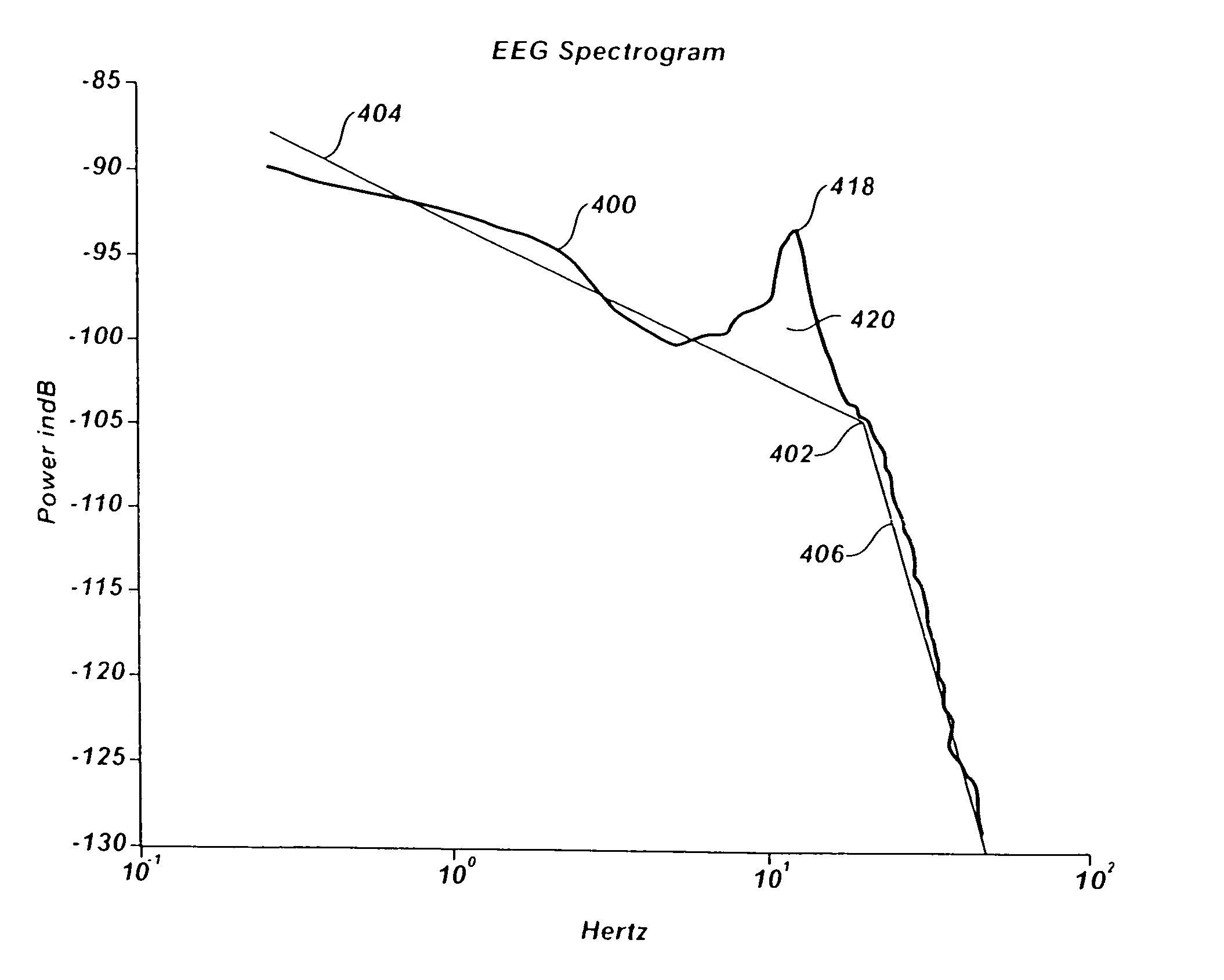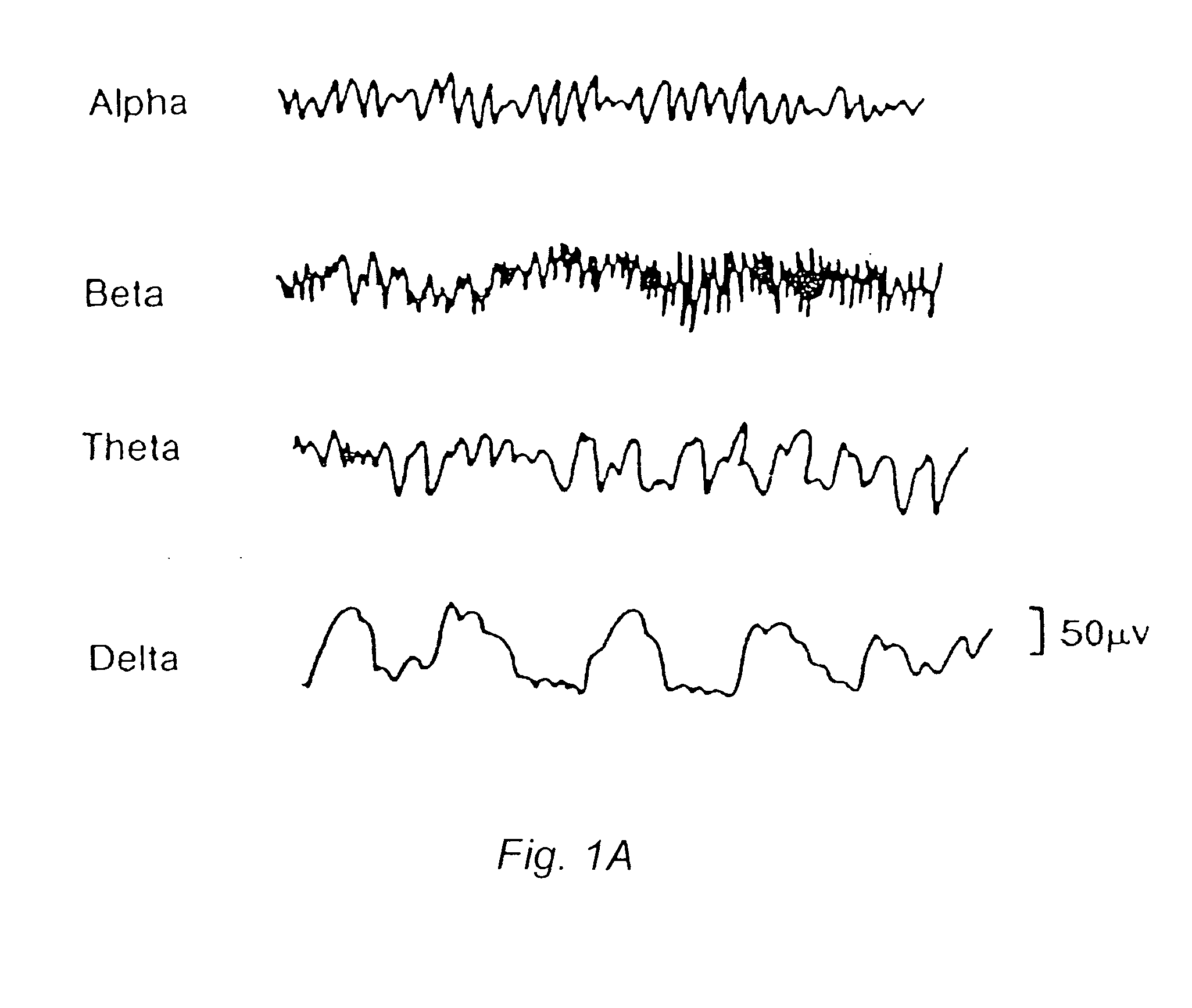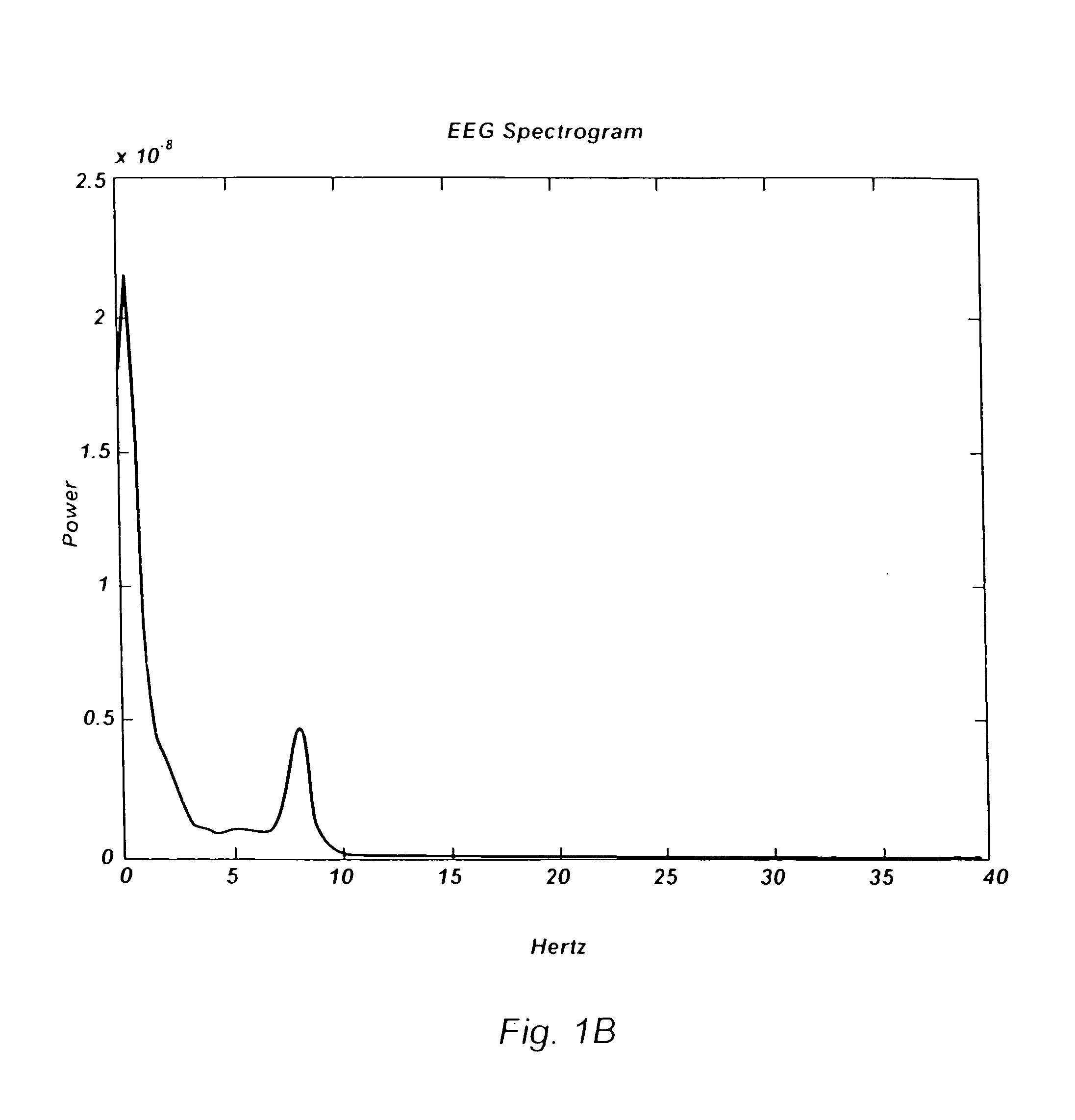Method and system for analyzing and presenting an Electroencephalogram (EEG)
an electroencephalogram and electroencephalogram technology, applied in the field of brain function monitoring, can solve the problems of excessive deep anesthesia, unreliable use, and excessive consumption of anesthetic agents, and achieve the effects of reducing the number of patients, and reducing the accuracy of eeg
- Summary
- Abstract
- Description
- Claims
- Application Information
AI Technical Summary
Benefits of technology
Problems solved by technology
Method used
Image
Examples
Embodiment Construction
[0029]The detailed description set forth below in connection with the appended drawings is intended as a description of various embodiments of the invention and is not intended to represent the only embodiments in which the invention may be practiced. The detailed description includes specific details for the purpose of providing a thorough understanding of the invention. However, it will be apparent to those skilled in the art that the invention may be practiced without these specific details. In some instances, well known structures and components are shown in block diagram form in order to avoid obscuring the concepts of the invention.
[0030]FIGS. 1B and 1C illustrate common ways that EEG spectrograms can be displayed. In FIG. 1B the y-axis shows the power (scaled logarithmically) of the different frequencies present in the spectrogram. The x-axis is scaled linearly from about 0 to 40 Hz. In FIG. 1C, a similar spectrogram is shown but the y-axis is scaled linearly.
[0031]As discuss...
PUM
 Login to View More
Login to View More Abstract
Description
Claims
Application Information
 Login to View More
Login to View More - R&D
- Intellectual Property
- Life Sciences
- Materials
- Tech Scout
- Unparalleled Data Quality
- Higher Quality Content
- 60% Fewer Hallucinations
Browse by: Latest US Patents, China's latest patents, Technical Efficacy Thesaurus, Application Domain, Technology Topic, Popular Technical Reports.
© 2025 PatSnap. All rights reserved.Legal|Privacy policy|Modern Slavery Act Transparency Statement|Sitemap|About US| Contact US: help@patsnap.com



